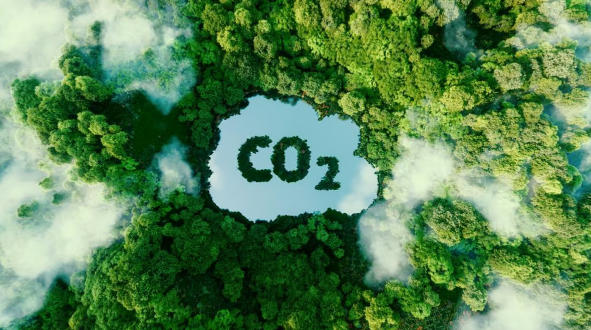Establishing a Carbon Market in India (GS Paper 3, Economy)

Context:
- India is embarking on a significant shift in its climate strategy by moving from energy efficiency targets under the Perform, Achieve, and Trade (PAT) scheme to emission-based targets for industries such as iron, steel, and aluminium.
- This transition reflects a broader aim to balance industrial growth with environmental responsibility, and to align with international climate commitments.
Introduction of Emission Targets:
- In her recent budget speech, the Finance Minister outlined a pivotal change in India's regulatory framework for high-emission industries.
- The shift from the PAT scheme, which focuses on energy efficiency, to emission targets will introduce a new carbon market system.
- This change aims to address the challenges of ‘hard to abate’ industries, which are difficult to decarbonize through energy efficiency alone.
PAT Scheme vs. Emissions Trading Systems:
PAT Scheme:
- Objective: The PAT scheme, initiated by the Bureau of Energy Efficiency, is designed to enhance energy efficiency in energy-intensive industries. It mandates specific energy consumption reduction targets for companies.
- Mechanism: Under PAT, companies are required to meet predefined energy efficiency standards. Those that exceed these standards receive energy savings certificates (ESCerts), which can be traded. The PAT system incentivizes companies to improve energy efficiency by offering financial benefits through tradable certificates.
Emissions Trading System (ETS):
- Objective: The ETS, also known as cap-and-trade, is a market-based approach that aims to control pollution by setting a cap on total emissions and allowing the trading of emission permits.
- Mechanism: Companies are allocated or purchase permits to emit a certain amount of pollutants. If they emit less than their allowance, they can sell their surplus permits. Conversely, companies exceeding their limits must purchase additional permits. This system provides a financial incentive for companies to reduce emissions by attaching a cost to exceeding emission caps.
India’s Climate Strategy:
India's climate strategy is evolving to incorporate more direct measures for emission control, aligning with its broader climate goals and developmental objectives. Over the past 15 years, India has focused on integrating climate action with economic development, aiming to achieve a balance between reducing emissions and promoting growth.
- Global Climate Agreements: India's commitments under international climate frameworks, particularly the Paris Agreement, play a crucial role in shaping its climate policies. India's Nationally Determined Contributions (NDCs) include targets to reduce the emission intensity of GDP by 45% below 2005 levels by 2030 and to achieve 50% of electricity capacity from non-fossil fuels by 2030.
- Decarbonization Efforts: India has participated in the Clean Development Mechanism (CDM) under the Kyoto Protocol, which allows developed countries to invest in emission reduction projects in developing countries. This mechanism has facilitated climate mitigation efforts while generating certified emission reduction units.
Challenges in the Iron and Steel Sector:
- The iron and steel sector is a critical component of India's industrial growth, essential for infrastructure and housing development.
- However, it is also one of the largest sources of greenhouse gas emissions.
- According to the International Energy Agency (IEA), current projects in this sector have a low likelihood of meeting net-zero emissions targets by 2050 due to the high energy and emissions intensity of steel production.
Carbon Market Strategy and International Obligations:
India’s approach to establishing a carbon market involves two phases:
Phase 1: Voluntary Market
- Description: The initial phase will introduce a voluntary carbon market, supported by a domestic offset mechanism. Companies can voluntarily participate and earn carbon credits through projects that reduce emissions or enhance carbon sequestration.
- Objective: This phase aims to build experience and infrastructure for carbon trading, while providing incentives for early adopters and supporting projects that contribute to emission reductions.
Phase 2: Compliance Market
- Description: The second phase will involve a mandatory compliance market, where regulated entities will be required to participate in carbon credit trading. This phase will enforce emission limits and create a formal market for trading carbon credits.
- Objective: The compliance market aims to ensure that emission reduction targets are met, providing a structured approach to managing industrial emissions and integrating with international carbon markets.
Conclusion:
- India’s transition from the PAT scheme to an emissions trading system represents a strategic shift towards more direct and market-based methods of managing industrial emissions.
- This approach aligns with India's climate commitments and developmental goals, addressing both environmental and economic concerns.
- Successful implementation of the carbon market will require effective regulatory frameworks, stakeholder engagement, and alignment with international climate obligations to achieve a balanced and sustainable approach to industrial growth and environmental stewardship.


